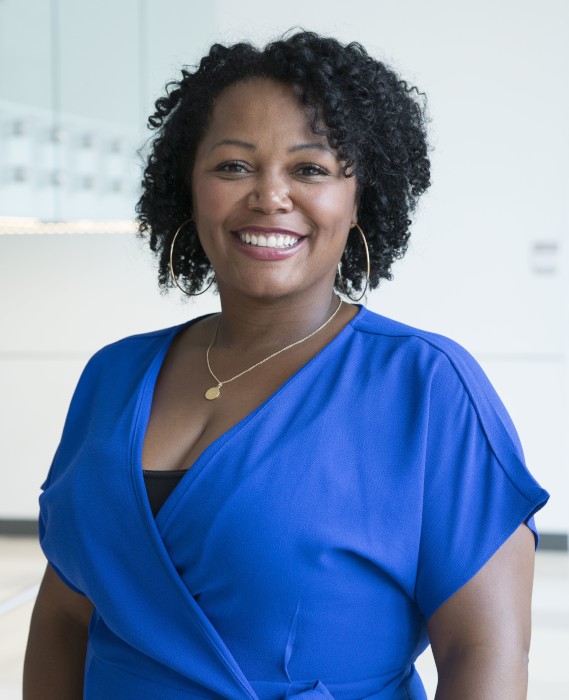There always seems to be a “great debate” in the AV space. Right now, all eyes are on the end user. Discussion is swirling about what defines an end user, how many end users are at InfoComm and how to build long-term end-user relationships. These conversations have led to organizations like the Professional Systems Network International (PSNI) Global Alliance creating opportunities for their members to learn directly from end users. Those efforts make sense, given that manufacturers, integrators and end users—all of us—are in this together, and that means industry growth depends on everyone collaborating.
The single question that rises above the clamor is what end users really want from their integrator partners. Do they want advanced systems? Education and training? Highly effective communication? Well, in fact, they want all of that…and more. Today’s end users want customer service that transcends technology, strategic design extending beyond branded boxes and a commitment to create outstanding experiences.
No group of individuals is better qualified to address this topic than members of The AV User Group. The group was formalized in 2009, and its membership of more than 1,250 is composed of technology managers from the financial services community, government and the public sector, healthcare and pharmaceuticals, telecom, professional services, higher education, retail, business services and manufacturing. Leading the group is Owen Ellis as Chairman, along with Deborah Jones and Kevin McLoughlin as Directors.
What was then InfoComm International and the AV User Group developed a partnership in 2017 whereby, according to a joint announcement, they made plans to “collaborate on initiatives to increase AV industry awareness among enterprise decision-makers and foster stronger relationships between the companies and professionals that build AV solutions and the businesses and institutions that operate and benefit from them.” The agreement extends through 2019, but it’s clear that the Audiovisual and Integrated Experience Association (AVIXA) and the AV User Group will have much to collaborate on in the future as end users continue to flock to industry events and influence decision-making in AV systems.
Members of the AV User Group generously made themselves available to offer their perspectives on not only when and why they choose to work with systems integrators, but also what exactly they want from an integrator partner. Our interviewees’ perspectives reflect their differing needs and distinct markets.
Hire Out Or DIY?
At a time when a larger number of audiovisual projects are being handled by internal technical teams, as opposed to being funneled to the integration channel, we thought it best to begin with a simple question: At your organization, do you direct your AV projects to a third-party systems integrator, or do you tackle them using in-house technical talent?
Fernando Mora, Manager of AV and Multimedia Technology, National September 11 Memorial & Museum, is in a unique position as the technology decision-maker representing one of the most historic memorials in our country. His team and he brought in an integrator early on. “When we opened in 2014, we took it upon ourselves to do every project in-house,” he began, “but, soon, we found it was a bit much for a relatively small team to accomplish, given the timelines.” Being responsible for a unique facility, whose requirements are different from most venues in the area, Mora sought that elusive perfect partner.

“I began to search for integrators with a strong engineering team that understands what I like to call ‘experience AV’—that is, using audiovisual systems to create interesting experiences not unlike what one would find at a theme park,” Mora continued. Believe it or not, that was a tough find in New York City, where corporate AV is often integrators’ big money maker. “Working in the AV integration world for 15 years prior to coming aboard, I had a good understanding of which firms would be a good fit,” he remarked. “We went with AVI-SPL for box sales and Diversified for labor. For projects that are larger, it makes sense for us to hire Electrosonic, because they were the original integrator.”
Whereas, for now, experiential AV is a road less traveled, a common denominator across vertical markets is prioritizing project timeliness. And that’s one metric by which third-party AV integrators can be very helpful. Timeliness is particularly important in the education category; there is little margin for error with schools and universities, which adhere to strict class schedules. Tim Cichos, AV Design Engineer, Audio Video Technologies, the University of Notre Dame (Notre Dame IN), mentioned that his team involves a systems integrator in almost everything AV-related that’s done on campus. “We have third-party integrators do everything from box sales for our in-house staff installations to full design and integration,” he affirmed. Variables determining the integrator’s level of involvement include new construction versus renovation versus scheduled upgrades, and whether the AV is going into a registrar-controlled space.

Photo courtesy of Rose Lamela.
The Technical Support Services team at Montclair State University (Montclair NJ) takes a similar approach. In one of several joint answers supplied to Sound & Communications, the team, composed of John J. O’Brien, Michael Korinko and Summer Jones, said, “The Division of Information Technology utilizes third-party AV systems integrators for all newly constructed spaces and building renovations, and for assistance migrating mediated spaces from analog and digital under our ‘AV Refresh’ program.” To decrease costs, the team provides Crestron and DSP programming that is created internally. “We utilize internal staff to perform refreshes on existing digital spaces, include replacement of projectors, touchpanels and programming,” they added.
Pete Shelly was an AV project manager, designer and engineer at a major financial institution. His employer depended heavily on third-party systems integrators. “Not so much for purchases of desktop video units or small, freestanding room systems, but for anything custom or installed,” he clarified. “Probably 75 percent of the room systems at the bank were custom, meaning microphones installed in the tables, tabletop boxes with presentation connectivity, ceiling speakers and VoIP interfaces/DSP for audio control and teleconferencing, all controlled by touchpanels.”

Photo courtesy of Rose Lamela.
Shelly was part of the financial institution’s lean staff of two, both of whom were responsible for handling AV project implementation and digital signage projects in the US, across multiple locations. Given that expansive scope, he added, “We worked with AV vendors to purchase, design and install these systems. It was important to have a one-stop shop for equipment quotation and ordering, system design and installation, and project management throughout the process. And that included programming, as we did not have AV programmers in house at the bank.”
That financial services firm’s needs, as articulated by Shelly, underscore a critical takeaway from all my conversations: the need for a genuine partner. “We depended heavily on the AV systems integrators to understand our needs, work with us and provide service after the sales, as needed,” he stressed. “This was an ongoing, fluid relationship—not just a ‘box sale’ relationship.” End users want to develop an ongoing relationship with a systems integrator, built on loyalty, trust, genuine engagement and mutual benefit. A mindset of “sell, install and move on” is not popular among today’s technology managers.
Brand/Product Loyalty
Many integrators exhibit manufacturer- or brand-loyalty, creating similar systems in various spaces. That’s not at all a bad thing, because across-the-board standardization can result in a consistent experience from room to room or building to building. Among AV User Group members who work in higher education, that point of view prevailed. “We are very brand- and product-loyal on campus,” Cichos affirmed. “This is not only to keep the end-user experience consistent, but also to allow our maintenance and replacement schedule to stay on track.” He offered the example of standardizing on a projector, which enables Notre Dame to maintain a smaller inventory of lamps. “One-off designs and products may be necessary in unique projects,” he conceded, “but, for the most part, we insist on brand and product loyalty.”

The team from Montclair State University had the same perspective, saying AV standardization “leads to greater consistency for the end user and creates a better support structure for our staff.” This can sometimes lead to strategic partnerships with particular manufacturers, as well. Montclair, for example, has standardized on Sony equipment—projectors, flat panels and PTZ cameras—for all new and renovated spaces across campus.
Opinions differ, however, about how strongly to prioritize brand consistency. Philip Barr, Regional CTO at a major financial institution, said, “I am not loyal to brand.” He continued, “As a CTO, I have to be more concerned about the end-user experience and who is actually going to operate the system. At the end of the day, if they have questions every time they go into the room, that inevitably takes time away from my staff.” For Barr, it’s not the brand that stands out, but, rather, the user interface and how people actually interact with the technology in the room.
Trusted Integrator Partners
In these discussions with AV User Group members, several commonalities came into focus with regard to what makes a trusted integrator partner: for instance, hands-on project management, adherence to standards, flexibility of offerings and quick responses. As is always the case, though, each client has its own unique DNA.
Mora, from the National September 11 Memorial & Museum, cited a potential partner’s connection to the venue’s deeply meaningful purpose. “Our venue holds a special place in the hearts and minds of most Americans,” he observed. “We find that we get the best service from integrators that subscribe to the message the museum is trying to deliver. We want them to understand they will be working on what many consider hallowed ground.”

Integrators wanting to work in a venue like Mora’s must also prepare themselves for unforgiving hours and minimal margin for error. “An integrator needs to work well in an environment that is open and running 15 hours a day, 365 days a year, in which working afterhours is a requirement,” Mora noted. “We have a system here of a significant size, and it must be operational at 8:45am, with no excuses. For most integrators, it’s a totally different dynamic—not every team is suited well for this.”
For a highly standards-minded technology manager like Cichos, the key is to adhere to the university’s parameters. “The willingness to recommend designs and products that meet our AV standards is the most important trait,” he stated unhesitatingly. “Another key point is to stick to the agreed price throughout the project. And, by that, I mean not having excessive change orders for every little discrepancy.”
For Shelly and the financial institution he worked for, it was paramount to find an integrator that could handle anything thrown their way—from “box sales” of standalone systems that the tech team could set up themselves, all the way to elaborate systems integration involving interconnected rooms serving hundreds. He added, “We looked for a vendor that had national coverage, and that could handle cookie-cutter projects and custom projects at sites where the bank AV project staff was not present.” Rounding out his list were a top-notch national service organization, fair pricing, and the capacity to offer education about new products and emerging technologies.
Barr had three critical traits lined up and ready to fire. He said, “Response rate is number one for me. Number two is being able to go to a showroom to see the products offered in action. Number three is being able to speak to someone at a high level who will then be able to manage the projects on our behalf internally.”

Project management is paramount for Montclair State University’s team. “The best, most trusted systems integrator partners have the best project managers on their staff,” they declared. “Having project managers that excel at management, organization and thinking outside of the box has led to our projects being on time and under budget.” This, they said, is because effective project managers ensure that the AV sales engineers have specified all the correct components and other technical elements based on Montclair’s AV standards for that particular space. “They also make certain that the equipment is prefabricated before delivery and that all media access control (MAC) addresses are shared in advance, so that the IP addresses can be assigned in a timely manner,” they said. Finally, an effective project manager supervises technicians, including subcontractors, and keeps them on task and moving forward to testing and commissioning.
With pithy precision, Mark E. Skalman, Global Multimedia Manager, Mayer Brown LLP, summed things up: “[A successful integrator partner has] a clear understanding of our environment and culture, and a firm grasp of how we manage our systems.”
Losing The Client
What kinds of behaviors could spoil an integrator’s relationship with the client? Among the answers that we heard were a failure to appreciate the client’s needs and preferences and unfamiliarity with what makes that client different from other entities.
Skalman said, “Our goal is to be innovative using best-in-breed technology, but we don’t want to be bleeding edge. Therefore, pushing the latest trends or gadgets that don’t fit our culture or workflows is a big turnoff.” He implored potential integrator partners, “Do some research on our firm and ask relationship-building questions before pushing solutions.”
The Montclair State University team added, “We have moved away from vendors that are not consistent in [project management and quality]. Examples of shortfalls would include mixing up equipment, not doing firmware updates, overestimating equipment needed or not providing proper close-out documents.”
Cichos circled back to consistency in response to what would jeopardize an integrator’s relationship with Notre Dame. He said, “We rely heavily on the fact that a consistent user experience is available in all of our spaces, and that the maintenance of the systems is consistent. Not sticking to our AV standards, or making a major design decision on a project without involving our team, would definitely be cause for a discussion with a vendor.”
For Mora, the “do not do” list boils down to two key things. “My first pet peeve is when salesmen or project managers are slow to respond to emails or inquiries. I understand how stretched those folks can be sometimes, but a simple response stating that the inquiry was received and that you’re working on it goes a long way.” He continued, “Second, it’s a pet peeve when engineers are arrogant and difficult to work with. A little humility is a good thing, and it’s in short supply in our industry sometimes.”
High Expectations
End users have high expectations for systems integrators. But given how important effective collaboration is, it’s heartening to see the AV User Group working hand-in-hand with AVIXA to facilitate conversations like this one. And, judging by InfoComm 2018, more end users are joining us at the table and bringing this dialogue to the next level.
Communication is a two-way street and so is effective partnership. Let’s continue to listen to, learn from and educate each other. Those who enjoy effective AV experiences—everyone!—will be the beneficiaries.
